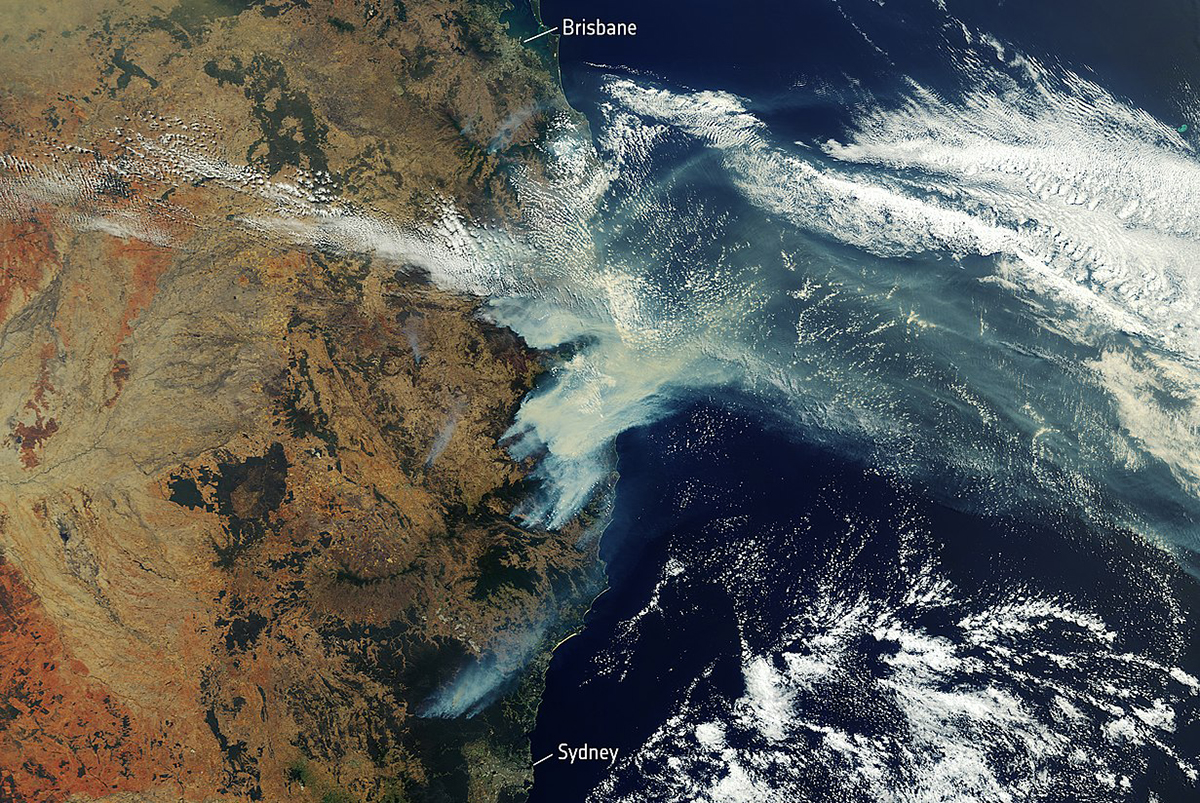
Australia’s 2019-2020 fire season garnered international attention as an environmental catastrophe.
The ecological implications of these fires were many: over 18 million hectares burned, and researchers estimate that nearly three billion animals either died in the fires or were driven from their habitats. The smoke and ash would linger after the last fires were extinguished. It is estimated that 830 million tons of carbon dioxide was released into the atmosphere during the fires.
Supporter Spotlight
But the impact of the wildfires was not just evident in the land and the air. Australia’s massive wildfires also affected the ocean.
A study led by Duke University called “Widespread phytoplankton blooms triggered by 2019-2020 Australian fires” is the first research to conclusively connect iron aerosol deposits from wildfires to a large-scale marine response.
The study, which was published in Nature earlier this week, concluded that iron particles that were airborne in smoke and ash from the wildfires fertilized algal blooms in the Southern Ocean. And not just on a small scale — the expanse of these algal blooms was unprecedented for the area. While this is a significant phenomenon, the long-term implications of fire-fertilized algal blooms are unclear.

“I think it’s too early to tell whether it’s a good thing or a bad thing,” said Dr. Nicolas Cassar, professor of biogeochemistry at Duke University and corresponding author on this study.
Phytoplankton is a type of algae that sits suspended in the water near the surface. It can make water hard to see through and often gives it a greenish appearance, thanks to the presence of chlorophyll-a. Some algal blooms produce toxins or deplete oxygen in a body of water, and these are considered harmful. But many occurrences of phytoplankton are positive. Algae is a building block of the marine ecosystem, and is a very important part of the food web.
Supporter Spotlight
This research focused on iron levels. The Southern Ocean is poor in iron. This means that the area has the potential for more algae growth, but was missing sufficient iron to make it happen. By contrast, the aerosols deposited by the wildfires had high iron levels.
“Pyrogenic” aerosols are produced when things like trees and plants burn. These particles were tiny enough to be transported by the wind, and by the time they made contact with the sea, it was a perfect recipe for an algal bloom.
The blooms occurred between December 2019 and March 2020. But they did not appear right off the coast of Australia. Instead, these expansive blooms occurred thousands of kilometers downwind and to the east. The aerosol outputs of the Australian wildfires traveled a significant distance before causing algae blooms in the ocean.
The research team observed the algal blooms remotely in satellite images. To confirm the anomaly they saw in the satellite data, they referred to robotic ocean biogeochemistry floats. Biogeochemistry floats are ocean-borne vessels that drift through the ocean and collect measurements, sending them back to land via satellite. These technologies, partnered with atmospheric chemistry measurements and transport modeling, allowed the researchers to track the influence of the wildfires on the ocean thousands of kilometers away.
Algae has the ability to sequester carbon by taking it out of the atmosphere and using it as part of its growth process. Since the Australian wildfires were responsible for huge outputs of carbon dioxide, this raises questions about the sequestration potential of algae. Scientists are not sure how much of the carbon from Australia’s wildfires dropped to the ocean depths and is sequestered for good, and how much was respired back into the atmosphere.
“That’s the next question,” Cassar said. “This is really the holy grail, is to figure out if some of the carbon was exported to the depths.”
The relationship between wildfires and climate is complex, and therefore has not yet been satisfactorily reflected in climate models, according to Cassar. Future research on fire-fertilized algae blooms would allow scientists to understand more completely how the climate impacts wildfires, and how wildfires impact the climate.
“I think that what would help in the future is having a rapid response team on site on research vessels, to really understand the full gamut of biogeochemical impacts that these wildfires have on ocean ecosystems,” Cassar said.
The Australian wildfires and corresponding algal blooms both occurred thousands of miles away from the North Carolina coast. But that doesn’t mean this research is irrelevant to North Carolinians.
Wildfires are becoming a more frequent and severe problem due to climate change, and major wildfire disturbances are now an annual occurrence. While Australia’s 2019-2020 wildfires were unprecedented, the American West has seen more intense fire seasons in recent years, carrying smoke across the entire country. The fact that these algal blooms occurred far away from the wildfires themselves illustrates the far-reaching ecosystem impacts that large-scale fires can have.
“We understand how catastrophic these wildfires are for local ecosystems,” Cassar said. “But what our results show is that these wildfires can have an impact on ocean ecosystems thousands of kilometers away, through atmospheric aerosol transport. It just shows the magnitude of the impact.”








